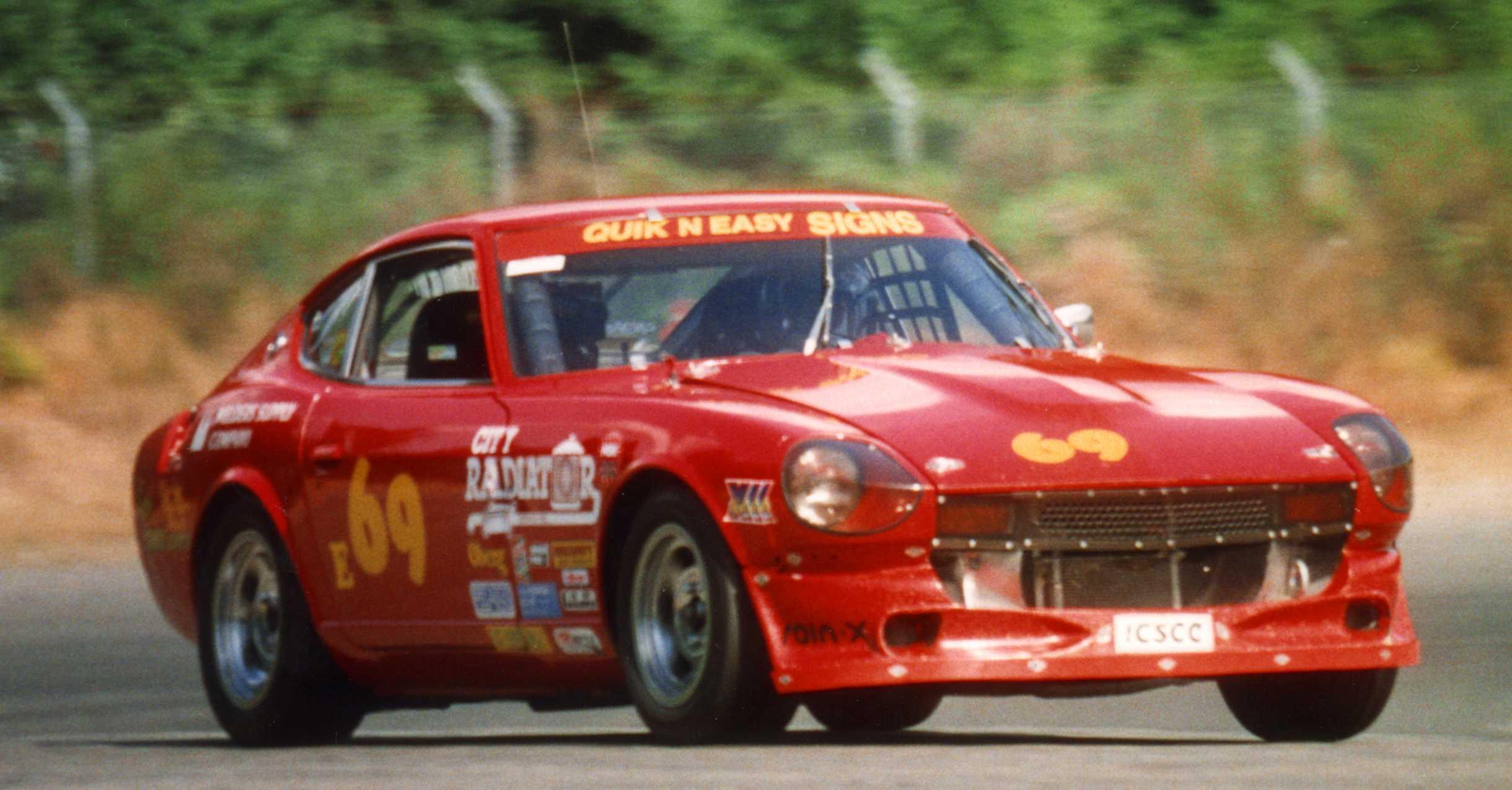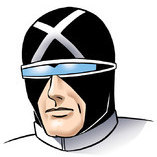
Everything posted by Racer X
-
Clown Car
From the album: Racer's Z Cars
The green, blue and orange clown car, number 339 is what my car looked like before it was mine. Hideous. I found 8 different colors under that paint job. I removed every one of them. Then conversion primer, sealer, and the red exterior, and grey engine bay, interior and bottom. It has always been run in ICSCC Conference Production (also in SCCA meets), E on DOT tires, D on slicks. The logbook dates back to the 1979 season. I bough the car in 1989 from Ron Burris. Ran two novice races, Westwood in BC and Portland. Took the car home after the Portland meet and stripped it to the bare shell. It had a bolt in roll bar (no cage). I pulled that out and had Tim Howard at H&N Enterprises in Woodinville build the cage. I removed every bracket and clip that I didn't need, cut back lips on the inspection lids, removed much of the inner door structure, skinned the hood, etc., removing about 200lbs of metal in all. I even took the wire harnesses apart and removed all but what wiring is needed to run the car to save more weight. I campaigned the car continuously for about 10 years, winning a few races, runner up in season points several times, and winning the regional honors in '97 running a combined ICSCC/SCCA schedule. Had a lot of fun in this car, but it costs a bunch of money to play, so I cut back some, focusing on fun rather than points. When Team Continental hosted the second Conference double header race at Thunderhill we went down and ran. During one of the races one of the fuel pumps quit. The engine ran lean and the detonation broke the crank, a single crack between the last rod and the last main journals. Can't complain, in over 20 years of building and racing L series engines that is only the second crankshaft failure, the other happening at the same place on the crank (noticed a vibration during the pre race warmup and shut it down). That was the last time I ran the car. Took time off from racing to design and build a house. Maybe it is time to get the Z running again. - Black And White
- Black And White
- ZZZZYA
-
Let's show vintage racing pictures. I'll start.
Thank you. I scanned that image about 15 years ago, but can't remember is the picture I scanned a slide, or a print. Either way, the colors have shifted a bit, and there is lint and a smudge on it. My photo processing skills have improved quite a bit since then, and I need to find the slide, and copy it using a digital camera and a slide/negative copier, and then clean it up in Photoshop. Cheers, Racer
-
fiberglass hood and deck lid
A bit late to the party, but check this out: http://www.reactionresearch.com/automotivedetails.htm They have several configurations to choose from. Take your pick.
-
Toyota 4x4 race pads
My race Z has the Toyota calipers on it. I have pads custom made using sintered iron (Velvetouch). Same material that is usd on 747 commercial airliner brake pads. The material is easy on rotors, and has no binders that require setting or bedding in. They are ready to go right out of the box. And they work just as good on the first stop, all the way to the last millimeter of material.
-
Let's show vintage racing pictures. I'll start.
Looks like Paul Newman is popular here. A photo I shot at Portland International Raceway in 1985 or 1986 (been so long I don't remember),, as he was entering turn 9. Scanned from a (possibly Ektachrome) slide. Paul Newman Portland by Racer, on Flickr
-
Gary's reported to be alright. Car, not so much.
Ouch.
-
Jury Rigging Fuel Pump
You actually counted? I see SteveJ mentions grounds five times in post #7, but doesn't mention the importance of good, clean connections. You mention methods for making connection checks in post #12, but fail to emphasize the points I made. In fact, no one mentioned the importance of ensuring good, clean connections. The before shot of the guy's car shows a rusty hulk. My experience with these cars is that corroded connections are a common problem. He admits he is lacking in electrical theory, so who knows, does he know how to read a schematic? Does he know the symbols and conventions used? I'm only trying to contribute to the discussion, and help the guy. Perhaps you can explain how your snipe at me does that?
-
Jury Rigging Fuel Pump
There is lots of good information here, and for sure, it is much simpler than we often make it out to be. Think of the electrical current as if it was water in a garden hose. The battery is the reservoir, or water supply. The electron flow though the wires is like the water flowing through the hose. One thing that has been overlooked and not mentioned is grounds, and connections. Without good grounds, and clean, tight connections, there will be problems. Make sure all the connectors are clean and shiny, and use dielectric grease to keep them that way. Grounds too. The electrical system on your car is a 12 volt system. That is nominal voltage. Alternators generally put out around 13 to 14 volts, so when the car is ruing and the alternator and the regulator are functioning correctly a voltmeter will read higher that the nominal 12 volts. And you should see that same voltage anywhere in the system, even at the back of the car where the fuel pump is. Also not mentioned here is the use of the ohmmeter function of the DVOM. Checking for excessive resistance is a great way to find poor electrical connections. Below is a link to some video that may help you figure this out. Check out YouTube for how to use a DVOM.
-
Racing Question: How does one deal with fuel delivery and high banked, high speed curves like Fuji, Monza, & Daytona?
My race car has a surge tank in each of the rear corners of the fuel cell. There are ball checks that allow the fuel to fill the surge tanks, then a each has its own fuel pump to move the fuel to a T, then a single line to the engine bay. There are check valves inline so if one runs low (as in cornering) the other won't pump fuel to it, but rather to the engine. Works great, never starves for fuel under any conditions. Well, except if one of the fuel pumps dies. Then the engine runs lean and pistons melt.





